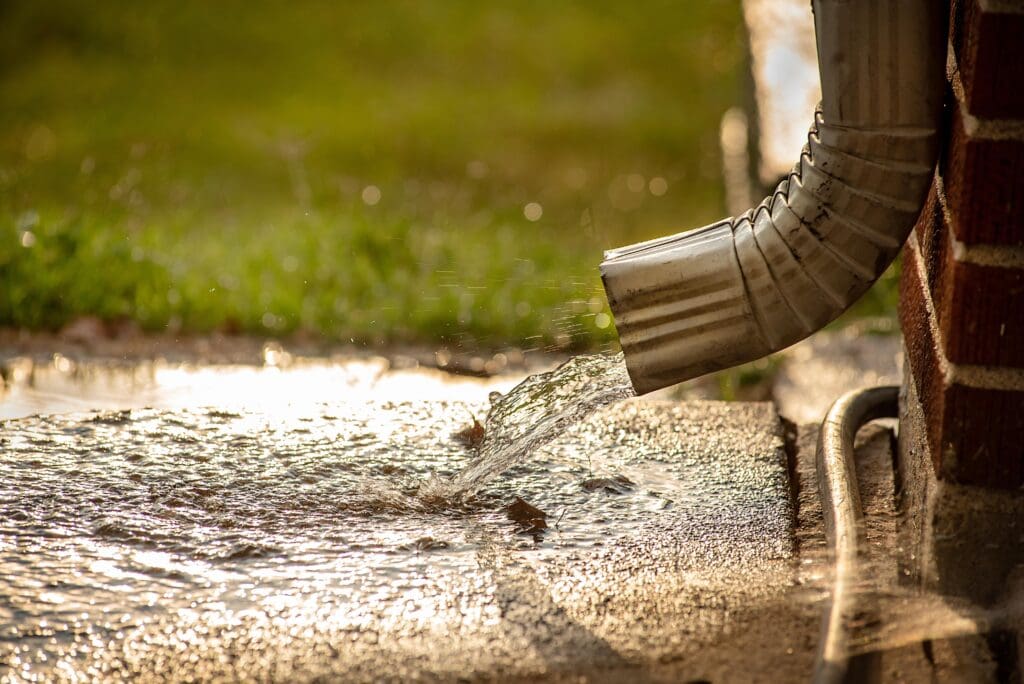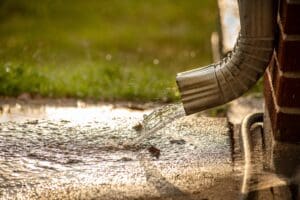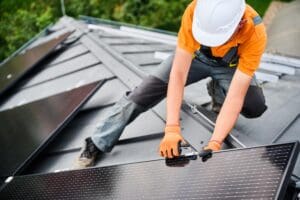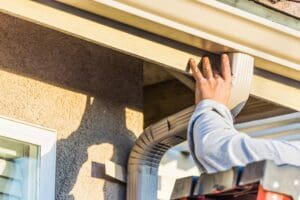If you’re looking for a more reliable and efficient way to keep your home safe from water damage, consider giving gutter downspout extensions a try. Created to control the flow of rainwater from your gutters, downspout extensions work to redirect water runoff away from your home and foundation.
Without water redirection, water would pool around your home’s base, leading to costly damages to your basement, foundation, and overall structural integrity.
Table of Contents
What Is a Downspout Extension?
Downspout extensions serve many purposes to safeguard your home against costly damage. By carrying water away from your home’s foundation, downspout extensions offer the following benefits:
- Reduce the Risk of Foundation Damage
Controlling the flow of water from downspout extensions ensures your property has proper drainage. Without this protection, an overflow of water could pool in certain areas, weakening the concrete foundation your home sits upon.
- Protect your Crawlspace and Basement
By limiting excessive pooling water, downspout extensions reduce the risk of oversaturated soil that can lead to foundation cracks and bowed walls in basements.
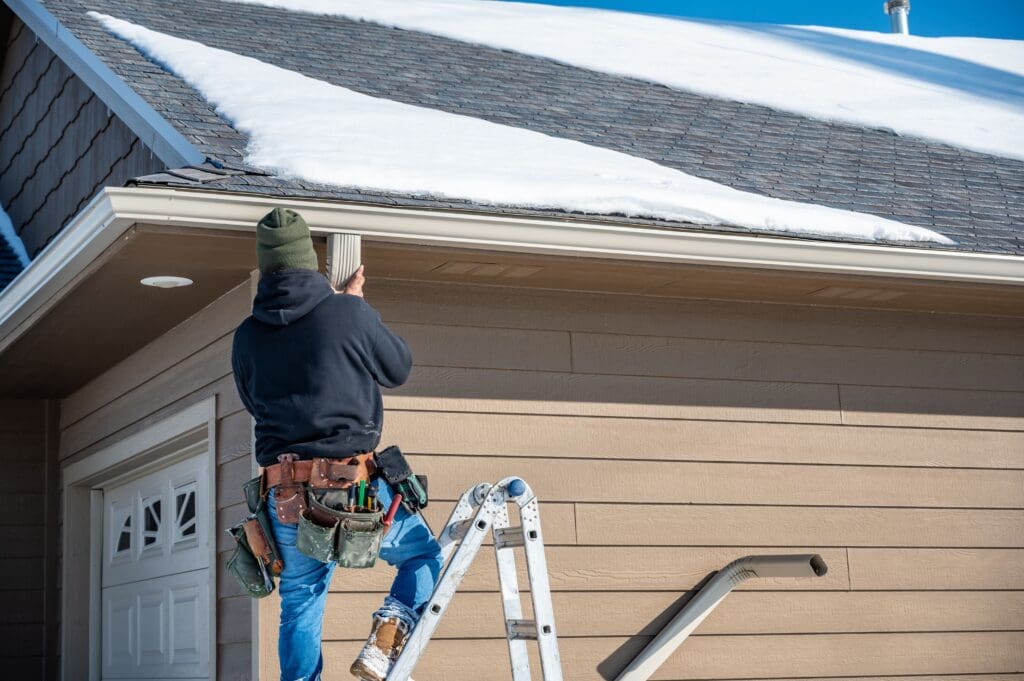
- Save your Home’s Interior
Guiding water away from your home’s foundation prevents water from finding cracks and crevices to leak into. Without a gutter extension, you risk water damage in the form of stains, damaged carpets, rotten wood floors, and termites.
- Protection from Water Logging & Erosion
If your gutters do not manage water flow away from your home’s foundation, you could be causing soil erosion on your property. When the area becomes oversaturated with water, it can cause cracks to form in your soil, impacting the integrity of your home, and damaging local vegetation.
Rain Gutter Downspout Extension Ideas
If you’re wondering, “What kind of downspout extension should I try?”, it’s really up to preference and the formation of your property. There are limitless options that come in a variety of forms, leaving plenty of room for you to find a solution that fits your needs. When deciding which kind of rain gutters to install, consider the following, as they are some of the most popular varieties:

- Aluminum Extension
- Buried Drain Pipe
- StealthFlow
- Decorative Splash Blocks
How Far Should Downspouts Extend From the House?
When determining how far to place your downspouts, reference the proximity to your home, accessibility, and landscaping in the area. The average length is a four-foot minimum extension from the downspout.
However, if your home slopes downward, it might be smart to use a longer extension that can ensure your water is flowing away from your home’s foundation.
What Are Underground Gutter Downspout Extensions?
Underground downspouts are drainage systems that connect a downspout to an underground pipe. Similarly to traditional downspout extensions, an underground extension simply carries the water further away from your home via a pipe dug underneath your property. This is a more involved solution that ensures there is no damage like flooding or soil erosion remotely near your home’s foundation.
What You Need to DIY a Downspout Extension
If you decide to DIY a downspout extension, it is important to have the necessary tools and equipment on hand. Take into consideration if there is any landscaping or infrastructure that you need to avoid when choosing an extension location by using drain piping. When creating each downspout extension, have this material on hand:
- Shovel
- 10 feet of 4-inch flexible drainage pipe
- 90-degree elbow
To create downspout extensions, follow the steps below:
- Downspout adaptor
- 3×4 inch internal coupling
- Gravel
- Pop-up drain emitter
Step 1: Dig a Trench
Using a shovel, dig a 6- to 8-inch deep trench in front of the house-attached downspout. The trench should be 10 feet long.
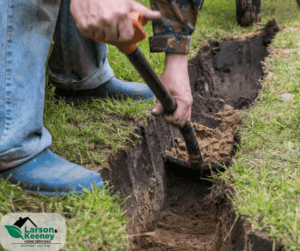
Step 2: Install Extension
Place the 4-inch piping in the trench, securely attaching one end to the house-attached downspout using the adaptor.
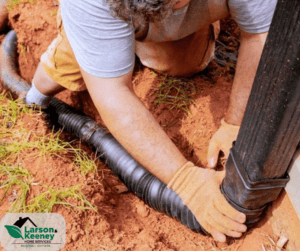
Step 3: Attach Pop-Up
At the opposite end of the piping, securely attach the pop-up drain emitter face up using the internal coupling. Use the gravel to hold the pop-up emitter in place (but not on top of it).
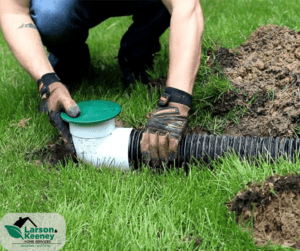
Step 4: Backfill
Once the extension is placed and installed, use the shovel to refill the hole. Follow the natural grading of the property to avoid soil pile-up. Remember, do NOT cover the top of the pop-up with gravel or dirt.
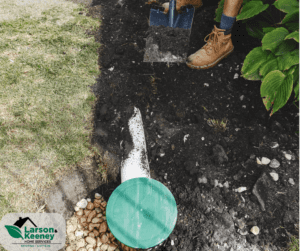
DIY Gutter Downspout Extensions vs. Hiring a Pro
Though installing a gutter downspout extension yourself may seem easy, it actually takes practice to be effective. It can be a labor-intensive project that requires more time than maybe initially thought.
While a DIY approach may save some upfront costs, it can lead to costly damage in the long run if not done properly. For this reason, it’s important to hire a professional when it comes to reducing water damage to your foundation. Too much is at risk to not be 100% certain about your craft.
To find a qualified professional to handle the task, ask contractors the following questions:
- What warranties do you offer?
- Are you licensed? Insured?
- What gutter products do you offer?
- What is your project timeline?
- What is your hourly or project rate?
- Do you offer financing programs?
If you want to avoid the hassle of finding an independent contractor, give us a call at Larson & Keeney. Our award-winning techs come with years of experience handling gutter repair, installation, and maintenance in the Grand Rapids area.
FAQs on Gutter Downspout Extension
Downspout extender installation can cost anywhere from $20 to $200. It depends on whether you hire a professional or DIY the project.
Underground downspout extensions are more discreet, limiting the risk of damage.
Yes, you can use alternative methods like rain chains and rain dispersal systems. However, to receive the most protection, we recommend installing a traditional all-in-one gutter system or an all-in-one gutter guard system.

